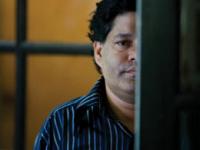
A recent review of evidence on HIV-related stigma commissioned by UNAIDS and carried out by ICRW revealed that HIV-related stigma is still pervasive and negatively affects the quality of life of people living with HIV. Credit: UNAIDS
Great strides have been made in recent years in understanding HIV-related stigma and discrimination – how to measure it and how to reduce it. However, the wide diversity of measures used to measure the causes, levels and consequences of stigma makes it difficult to compare prevalence of stigma across setting and populations. In addition, the lack of standardised indicators at the programme, national and global levels has been a significant barrier to scale up stigma reduction programmes.
To consolidate understanding of stigma and its devastating impact on peoples’ lives, UNAIDS brought together researchers, monitoring and evaluation experts, HIV-programme implementers, and people working at policy level to share lessons learnt on stigma measurement, to review existing measurement tools and to lay the ground to develop a set of common, standardized indicators on HIV-related stigma and discrimination.
“We have confirmed that while the languages and faces of stigma differ from place to place, the underlying structure is the same,” said Barbara de Zalduondo, Chief of the Programmatic Priorities Support Division of UNAIDS. “We came away convinced that there are common factors of stigma, and that we can use a variety of tools to measure these in comparable ways.”
The three day meeting was held from 23-25 November in Washington DC in collaboration with the Global Network of People Living with HIV (GNP+), International Center for Research on Women (ICRW) and the International Planned Parenthood Federation (IPPF).
A recent review of evidence on HIV-related stigma commissioned by UNAIDS and carried out by ICRW revealed that HIV-related stigma is still pervasive and negatively affects the quality of life of people living with HIV. Stigma and discrimination also act as impediments to uptake of HIV testing, treatment, and care and adherence to treatment.
The participants at the meeting agreed on the key areas that need to be measured to understand stigma associated with HIV and the layered stigma attached to sex work, injecting drug use and homosexuality and expressed enthusiasm about the meeting outcomes.
“We now have tools to understand and reduce stigma, and can move in very specific ways to support people living with HIV and will no longer speak in abstract terms,” said Kenly Sikwese, Coordinator of the PLHIV Stigma Index in Zambia.




